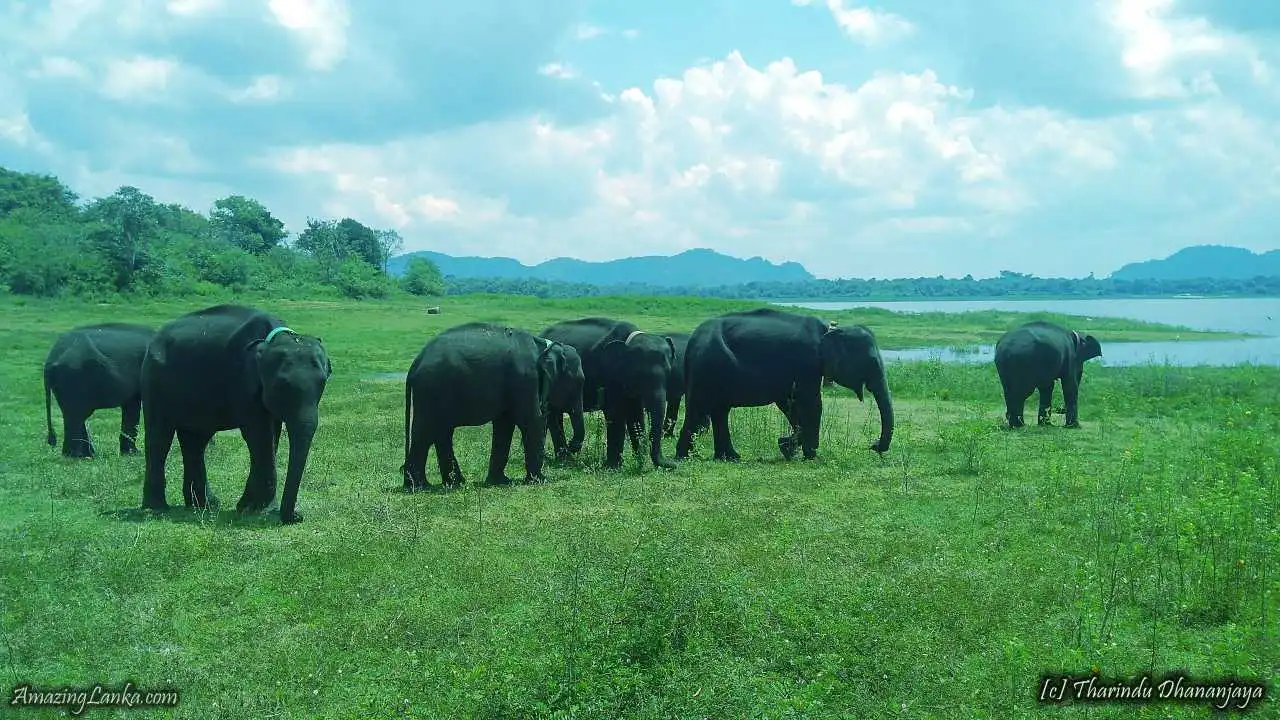Established under the Mahaweli development project as a catchment area of the Maduru Oya Reservoir and refuge for the herds of elephants, who were displaced by the irrigation project, Maduru Oya National Wildlife Park is rich in flora, fauna and cultural heritage.
The park perimeters include five reservoirs Maduru Oya, Ulhitiya, Ratkinda, NDK reservoir, and Henanigala tank and are also fed by tributaries of Mahaweli and Maduru Oya rivers.
The park’s main attractions are the elephants, which there are about 200, who call Maduru Oya home. The other members of the fauna include sloth bear, leopard, water buffalo, toque monkey, common langur, Jackal, fishing cat, wild boar, Indian Muntjac, spotted deer, sambar, porcupine, black napped hare, Indian Pangolian, European otter and Grey slender Loris.
The park also boasts of a rich collection of birds including painted stork, white bellied sea eagle, grey pelican, great cormorant, Little cormorant, Sri Lanka jungle fowl, broad billed roller, common tailor bird, shama, black hooded oriole and the endemic red faced malkoha. The parks reservoirs are home to flocks of oriental darters, spot billed pelican, Asian open bill, black headed ibis and Eurasian spoon bills.
In addition to its rich biological diversity the construction of Maduru Oya reservoir unearthed an ancient sluice on the old ruptured earthen bund of the Maduru Oya. The upper sluice was built in two phases; the first of which dates to before the 6th century BC while the lower sluice is believed to be built during the third to first century BC.
Vedda people, the indigenous people of Sri Lanka, numbering less than a thousand people, lives in Kandeganwela, Kotatalawa, henanigala and Dambana maintaining a life of hunting and chenna cultivation.
Things To Do: Wildlife, photography, bird watching, explore and camping


